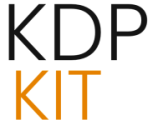
The Calculated Rollout: Targeting the Billion-Dollar Language Corridors
Amazon didn’t flood the market with 50 languages; they didn’t even launch 10. Their initial beta deployment is a masterclass in precision, focusing on language pairs with the highest proven digital commerce overlap. This isn’t guessing; this is data-driven deployment designed to ensure the AI performs flawlessly on the most lucrative texts right out of the gate. This measured approach allows Amazon to gather hyper-specific performance metrics before attempting broader, riskier rollouts.
The Big Three: English, Spanish, and German Supremacy
The chosen initial focus points—English, Spanish, and German—aren’t arbitrary. They represent the most active and valuable cross-language digital book lanes currently available on the Kindle platform. The emphasis on English-Spanish translation recognizes the immense and ever-expanding reader base across North, Central, and South America, where these two languages are the bedrock of digital commerce. Think of the untapped readers in Latin America who devour English-language bestsellers but would jump on a Spanish version instantly. On the European front, targeting German to English translation taps into what remains one of the continent’s most text-heavy and valuable publishing sectors. For authors already seeing sales in their source language, this service immediately validates their work in new, high-value territories.
This targeted training approach serves a dual purpose:
The Pilot Program: Data-Driven Strategy for Future Language Rollouts
The limited initial offering is not a sign of stagnation; it’s the definition of a rigorous pilot program. The underlying technology is scalable AI, meaning expansion is inevitable—it’s just a matter of when and *how* the next batch gets added. Amazon is stress-testing everything: infrastructure stability, model accuracy across genres, and author adoption rates. Future language additions will be dictated by hard data extracted directly from the global Kindle marketplace itself:
This methodical, evidence-based process ensures that when a new language pair is introduced—say, English-French or English-Italian—it meets the high commercial and quality benchmarks set by the initial English-Spanish/German-English services. This builds reader trust incrementally, which is crucial when dealing with AI-generated text. Don’t hold your breath for obscure languages yet; Amazon is playing the long game by securing the highest-yield markets first. You can track general shifts in the broader digital publishing market, which is projected to hit over $22 billion by 2030, to see where the next wave of expansion might focus.
The Authenticity Firewall: Protecting Author Integrity in the AI Age
The biggest resistance to any large-scale AI content push is the specter of quality degradation. For authors, seeing your carefully crafted prose become nonsensical machine output on a foreign storefront is a nightmare scenario that risks brand dilution. Amazon appears keenly aware of this, embedding quality control measures that act as a necessary friction against the speed of the AI.
The Non-Negotiable Checkpoint: Internal Accuracy Evaluation
Central to quality control is an automated vetting step that happens *before* your book ever sees the digital shelf. Every translation generated by Kindle Translate undergoes an internal accuracy assessment. This is designed to be a hard stop for anything truly egregious—the kind of gross errors, nonsensical phrasing, or major semantic shifts that would instantly alienate a new reader and lead to immediate, damaging reviews.
For the author, this means:
While this process is automated, its existence is a direct acknowledgment that literary quality is the counterbalance to technological speed. We’ve seen historical comparisons of Amazon’s translation engine versus others, and while nuance is always a challenge, this internal check is Amazon’s primary defense against literary dilution.
Transparency is the New Trust: Labeling and Reader Previews
Amazon knows that skepticism surrounding AI content isn’t going away. Their strategy to combat this is radical transparency. For every title translated using Kindle Translate, the digital storefront will feature a clear, distinct, and easily identifiable label.
This protocol empowers the reader:
This combination—mandatory internal checks layered with transparent customer-facing disclosure—is Amazon’s way of building confidence. They are essentially telling the reader, “This is AI-assisted, but we’ve checked it, and you can verify it yourself.” This shifts the conversation from a hidden technology to an acknowledged, auditable tool.
The Author’s Revolution: Unlocking New Earning Power and Global Reach
Let’s be honest: the business case is the most compelling part of this announcement. For self-published authors, the ability to translate existing content into multiple languages instantly and affordably is less a new feature and more a complete overhaul of their earning potential.. Find out more about AI powered translation service for KDP authors tips.
Breathing New Life into the Backlist for Maximum Revenue
For authors with a decade of published work, the Kindle Translate service offers the opportunity to turn static assets into dynamic, global income generators. A book that peaked in its original English-speaking market years ago can find a complete second life in, say, the German or Spanish marketplaces, all without writing a single new word. This is exponential earning potential derived purely from existing IP.
Consider the power this puts into the hands of an established author:
KDP author Kristen Painter noted the impact perfectly: “Foreign translations open doors to new readers around the world and give my titles a second life. It’s one of the smartest ways to expand both reach and revenue”.
Shattering the Foreign Rights Barrier: Autonomy Restored
The traditional model forced authors to sell off their digital translation rights, often for a pittance, handing over control and a significant chunk of royalties to middlemen—agents, foreign publishers, and distributors. This system was notoriously slow, fragmented, and financially disappointing for all but the absolute top-tier authors. Kindle Translate eliminates this entire labyrinth for digital sales.. Find out more about Bypassing foreign rights negotiations for self published books strategies.
What does this mean for your autonomy?
This reclaiming of digital rights autonomy is perhaps the single most empowering aspect of this launch for the independent creator community. It democratizes global publishing in a way we haven’t seen before. If you are looking for more insights on maintaining that autonomy, check out this guide on maintaining your digital rights.
The Reader Ecosystem: Ensuring New Content Gets Read
A new catalog is useless if readers ignore it. Amazon understands that success hinges on how readers in targeted markets—like Germany, Spain, and Spanish-speaking Latin America—perceive and discover these new titles. The experience must be seamless and reassuring.
Discoverability: Integration is King
For the average reader browsing the Kindle store, the key is clarity and visibility. Because Kindle Translate books are listed as distinct products, they immediately inherit the full power of the Amazon search algorithm:. Find out more about AI powered translation service for KDP authors overview.
This seamless integration into existing discovery paths is vital for market traction, ensuring that this new inventory doesn’t sit on a separate, ignored shelf.
The Power of the Pool: Entanglement with KDP Select and Kindle Unlimited
The true commercial accelerant is the service’s compatibility with Amazon’s existing ecosystem staples. Any book translated via Kindle Translate is fully eligible for enrollment in KDP Select. This is a massive incentive.
What this means for reader trial and author reward:
Gaining instant access to this high-visibility, high-traffic promotional pool is arguably the single greatest commercial benefit bundled with the translation service itself. For context on how powerful KDP Select remains in 2025, reviewing recent shifts is wise.
Kindle Translate in the Mid-2025 Publishing Ecosystem
This new tool doesn’t exist in a vacuum. It arrives in a KDP environment that is constantly being refined to empower its independent creators. Kindle Translate is the linguistic answer to other recent platform expansions, painting a picture of a company aggressively removing systemic hurdles.
Contextualizing the AI Tool Amidst Evolving KDP Services
In 2025, the KDP platform is focused on holistic global access. While recent updates have expanded physical print distribution into new European territories and opened up premium advertising tiers to authors with just one title, translation addresses the final major hurdle: language. The tool aligns perfectly with the platform’s ethos of digital efficiency and direct author empowerment. It completes the toolkit: ad access sharpens marketing, print distribution broadens physical reach, and translation cracks the linguistic market access problem.
Competitive Stance: Locking In Loyalty with Frictionless Global Reach
The launch immediately strengthens Amazon’s competitive position against rivals pouring resources into cross-language content. While other services offer translation tools, Amazon’s key advantage is the frictionless integration. By embedding the solution directly where the transaction occurs—the Kindle Store—they minimize the steps between translation completion and customer purchase to an extent that external translation services simply cannot match. This move makes international publishing feel like an expected, default feature of being a KDP author, forcing competitors to play catch-up in providing an equally simple, end-to-end solution for the self-publishing army.
For deeper insight into the larger technological shifts impacting publishing, look at industry analysis on AI and publishing technology, which shows that platform integration is the future.
Key Takeaways and Your Next Steps
The November 6, 2025, launch of Kindle Translate is a pivotal moment. It democratizes global reach, but only for those who act strategically. The key is to remember this is a quality-first, data-driven launch.
Actionable Insights for Authors
Here’s what you should do right now to capitalize on this shift:
The era of the globally accessible, self-published catalog is here. The barrier is down, the tools are ready, and the initial corridors are established. The question is no longer *can* you publish in Spanish or German, but how quickly will you claim your share of that new audience?
Have you already signed up for the beta? What are your first language pair decisions? Share your thoughts and strategies below—let’s build this global library together.







